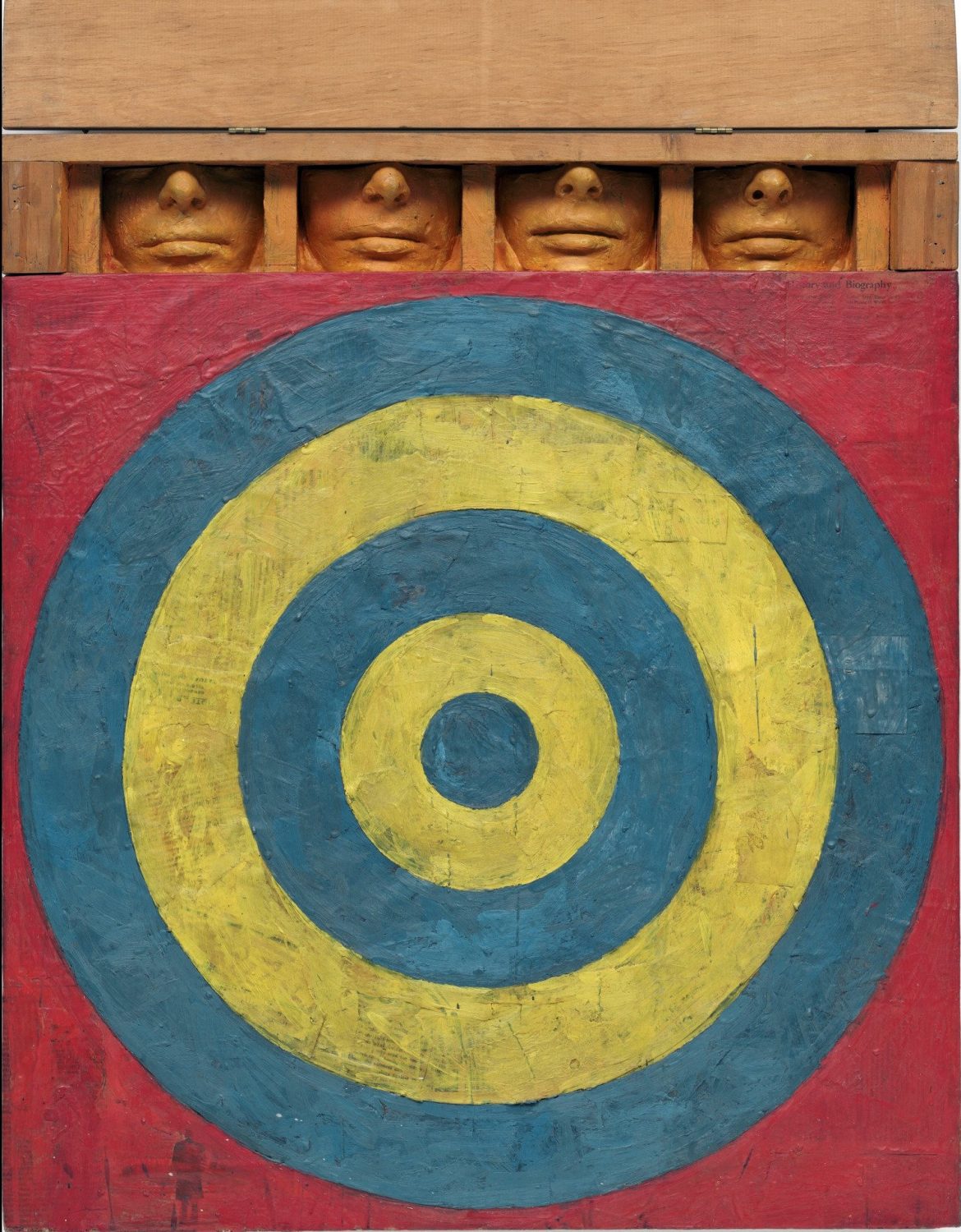 The circumstances under which I was introduced to the work of Jasper Johns are lost to me, but I’m fairly certain the first painting of his I saw was Target with Four Faces.1
The circumstances under which I was introduced to the work of Jasper Johns are lost to me, but I’m fairly certain the first painting of his I saw was Target with Four Faces.1
What initially struck me about the piece was the texture of its surface – at the time, I didn’t even know what encaustic, the painting’s medium, was; I had to look it up. It is an ancient technique, little-used when Johns discovered it. The vehicle is wax; he mixes it with oil paint as the pigment. Encaustic dries so quickly that each individual brushstroke, each individual drip, is discrete; even when layered, each retains its own quality. Johns would later gain more finesse in his technique, taking full advantage of the medium’s unique look – smooth, soft, and translucent, almost like skin. However, even at this stage, the surfaces of his work are distinctive and seductive. Additionally, in Target with Four Faces, Johns employed torn newspaper collage as a visual texture able to be seen through the encaustic.
Johns has said early in his career, “I tried to hide my personality, my psychological state, my emotions.”2 Certainly, compared to, say, Willem de Kooning’s or Francis Bacon’s contemporaneous work, his does appear reserved. Targets, like the flags, numerals, and letters he also utilized, are a pre-formed design, “things the mind already knows,” as he put it. Once he settled on his subject matter, it was something that he, and presumably the viewer, didn’t have to think about.3 Johns’ focus was on the process of making a painting, and the nature of art itself – is it a target, or is it a painting?
Regardless, I find Target with Four Faces diverges from Johns’ stated tenet. With the addition of the four plaster casts of the bottom half of a face, the target becomes emotionally and psychologically charged. The piece has an uncomfortable edge – the casts are cut off just below the eyes; the faces are, in essence, blindfolded, bringing to mind a firing squad. It’s as if the viewer, facing the target, is the executioner. I can’t fathom how this piece must have looked in the pre-Pop, pre-Minimalist world of 1958, when it was shown in his first solo exhibition,4 but when I saw it for the first time, twenty-one or twenty-two years later, it still packed quite a punch, even in reproduction.
Johns was successful in creating work that would be viewed as emotionally neutral – his first show was seen as a reaction against the Abstract Expressionism of the time, and later on, as a precursor to the “detached” Pop and Minimalist movements. However, one does wonder if, as a gay man in 1950s America, he felt threatened – targeted, as it were – and if this anxiety was revealed in Target with Four Faces.
1 The other possibility for this distinction is Flag (1955); either way, it was an astonishing initiation.
2 April Bernard and Mimi Thompson: “Johns On…”; Vanity Fair, February 1984, page 65.
3 Nevertheless, it does seem like it was a contentious time to be painting the US flag – the McCarthy hearings had taken place only the year before.
4 Yes, his first solo exhibition. There was no growing up in public; Johns appeared to have arrived fully formed and with quite a splash. Target with Four Faces was reproduced on the cover of the January 1958 issue of ARTnews, and it and two other pieces from the show at the Leo Castelli Gallery were purchased for the Museum of Modern Art, New York. He was not yet twenty-eight years old.